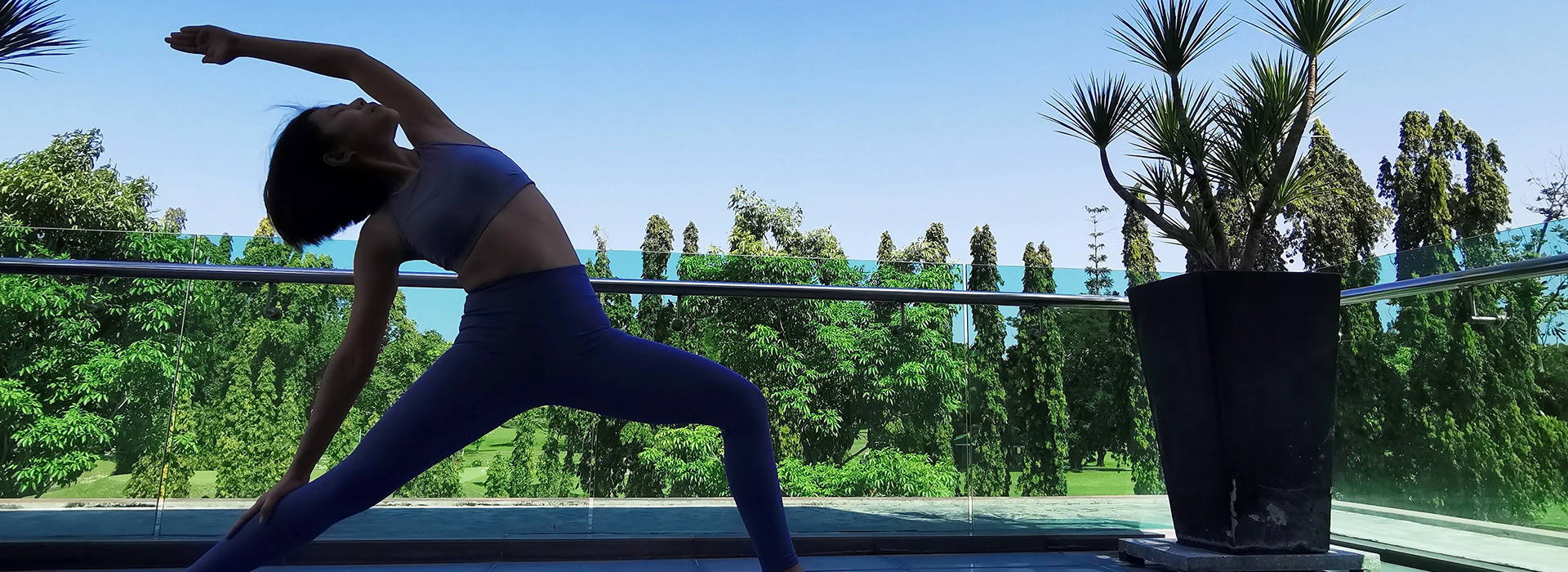
Our mind is full of thoughts that aren't always related to what's going on at the moment. It can wander and take us to places we shouldn't be, whether it's in the past that we have moved on from or thinking negative or unhealthy thoughts about the future. Mindfulness gives us respite from a busy mind. It is the practice of gently focusing our awareness on the present moment over and over again.
Dr Natalie Games, a clinical psychologist at Alliance Counselling, explains that mindfulness is essentially the ability to be aware of what is happening around us and to turn our attention to our immediate surroundings using our senses – sight, smell, sound, touch and taste – rather than being lost in our inner world, our thoughts and dialogue.
“As we pay attention, we do it without judgement – it’s neither good nor bad, right nor wrong, hot nor cold, it just is,” she says. “And, importantly, we pay attention with kindness to develop compassion and empathy for ourselves and others.
"Fundamentally, mindfulness involves being present (engaging our senses) in the moment, focusing on the reality (non judgmentally) and accepting it (with kind attention) for what it is,” she summarises.
Benefits of mindfulness
There are many ways that mindfulness can help in our lives. For example, when we spend too much time thinking negative or unhelpful thoughts, we are more likely to be anxious or stressed. Practicing mindfulness means we're directing our attention away from this type of thinking. Studies have shown that mindfulness can reduce depression and anxiety as well as lower blood pressure and improve sleep.
It'll also help us manage our emotions better so we won't react quickly. And it'll change the way we think, as we’ll be more aware of our thoughts. Mindfulness can also benefit our relationships. A 2018 study found that people who practice mindfulness end up being more accepting of their partner's flaws, therefore leading to better overall relationship satisfaction.
How to practice mindfulness
Dr Games says the best way to practice mindfulness is to stay present and anchored in your day. Check in with what you are doing and be aware of your thoughts, feelings and emotions. Ask yourself if you are truly listening to those who are talking to you or are you actually thinking about your response before they've finished speaking? Being fully present like this enhances the connection you have with others.
Dr Games shares eight ways we can practice mindfulness:
Body scan
This is a simple exercise where you check in with all parts of your body by doing a scan to see where you may be holding any tension or feeling. Be curious without judgement as you do this.
Chair yoga
This is especially helpful for older adults as it can help to reduce risk of falls, improve quality of life and increase overall physical functioning. Chair yoga allows you to stay seated while practicing yoga poses and can easily be done at home. Search for information or videos online and see which poses you're most comfortable with.
Mindful walking
Mindful walking can improve mental health and promote well-being. It can be done anywhere, even on a busy street. While you're walking, pay attention to your body's sensations. Note how you feel or how your arms swing. Look at your surroundings with an open mind and observe all the sights, sounds and smells. Basically, enjoy the moment.
Gratitude exercise
Practicing gratitude is another great exercise that can promote overall wellness and mindfulness. And it’s something that we can all benefit from, regardless of age. Use it to cultivate mindfulness and focus on the positive aspects of your life.
Tai Chi
This is a gentle form of martial arts that helps improve balance and coordination, compared with yoga, which helps increase flexibility and strength.
Gardening
Gardening is one of the best mindfulness activities for older adults. It gets you outside in nature, which has been shown to have numerous health benefits.
Art
It doesn't matter if it's painting, drawing, sculpting or any other type of creative expression – it can help you focus your attention on the present moment and tap into your creativity. There are no rules or expectations when it comes to making art so just let go and have fun.
Cooking and eating
Cooking is another everyday activity that can be done mindfully. Just focus on what you can see, smell and taste while you’re doing it. Then, continue your mindfulness practice by eating mindfully. Take your time to savour each bite and really pay attention to the flavours, textures and aromas of your food and what you’re physically putting into your body.

Here are four other ways to practice mindfulness:
Create a journal
Write down your thoughts and feelings. You can do this every day or at regular intervals, eg. once a week. This helps you track how you are feeling and you can also review your thoughts privately.
Focus on your breathing
Take note of your breathing for a few minutes every day. Take deep breaths and keep your mind clear – don't think of anything while doing this. Also, whenever you feel stress or negative thoughts, take a minute to sit down, close your eyes and take a deep breath. Focus on how your breath moves in and out of your body; this will help you feel more centred.
Mindful stretching
Take a few minutes to stretch each day. Mindful stretching means you focus on your breathing while doing it. Pay attention to how your body feels and stay clear of distracting thoughts.
One task at a time
Give whatever you're doing your full attention at all times. Working on one task at a time helps you to stay focussed and your mind to be more centred.
Once you learn how to practice mindfulness, you'll live in the moment and be able to control your emotions and stresses better. Start your mindfulness journey today to better physical and mental health.





![ActiveSG Academies and Clubs Logo (Solid Colour)[8647]](https://www.activesgcircle.gov.sg/hs-fs/hubfs/ActiveSG%20Circle%202023Theme/images/ActiveSG%20Academies%20and%20Clubs%20Logo%20(Solid%20Colour)%5B8647%5D.png?width=150&height=65&name=ActiveSG%20Academies%20and%20Clubs%20Logo%20(Solid%20Colour)%5B8647%5D.png)



-01.png?width=200&height=141&name=Team%20Singapore%20Logo%20(Red)-01.png)












.jpg?width=250&height=250&name=CQ@Clarke%20Quay%20Poster.jpg%20(400x400px).jpg)
.png?width=250&height=250&name=CCE%2024%20April%20Coaching%20as%20a%20way%20of%20Life%20From%20(400%20x%20400%20px).png)

